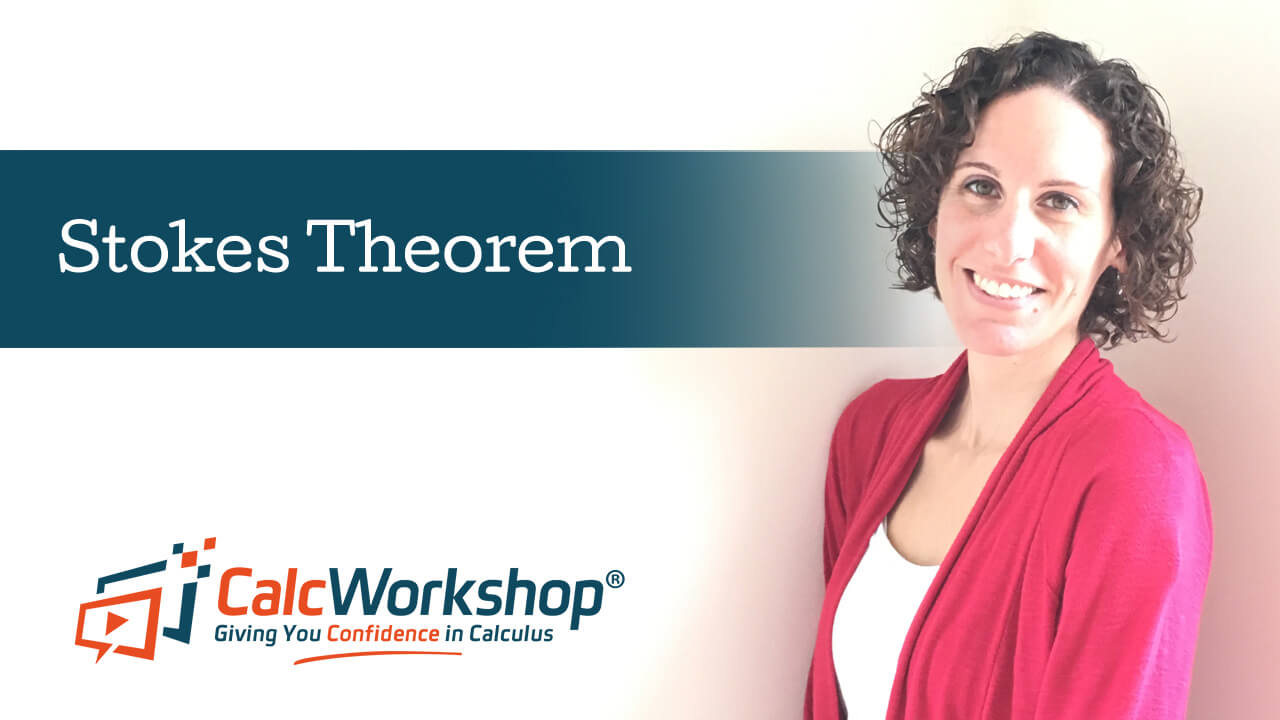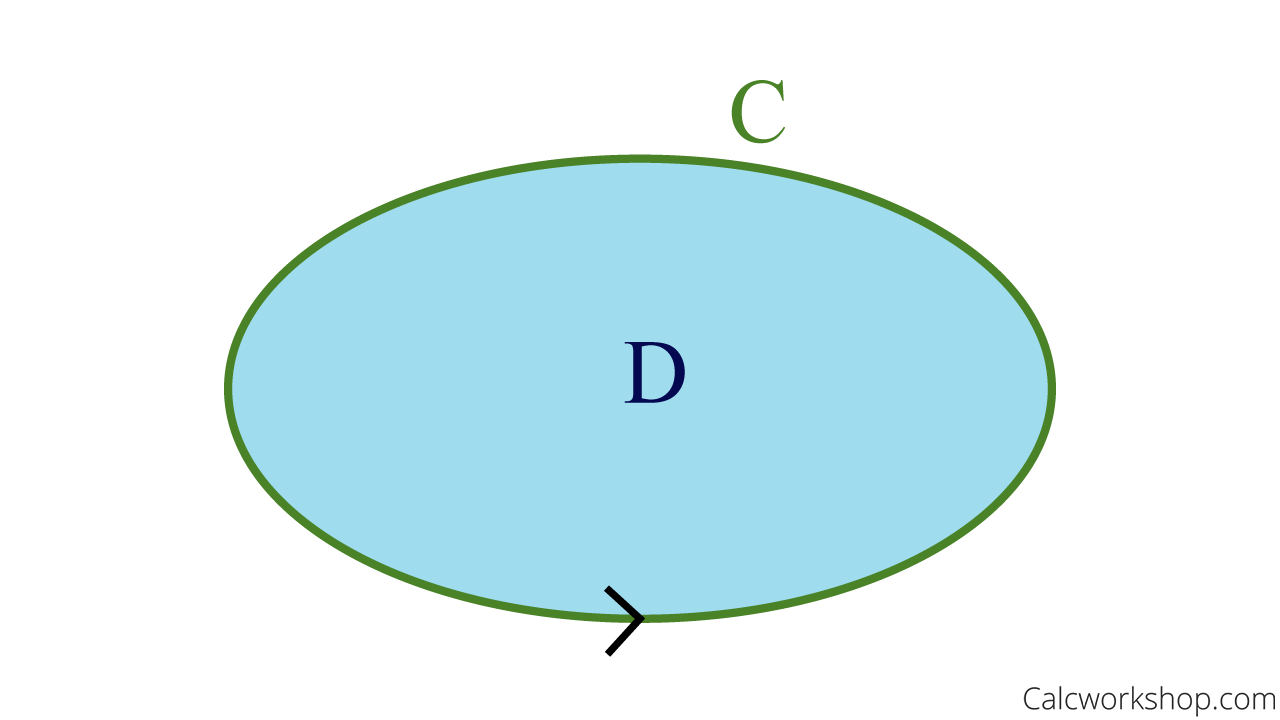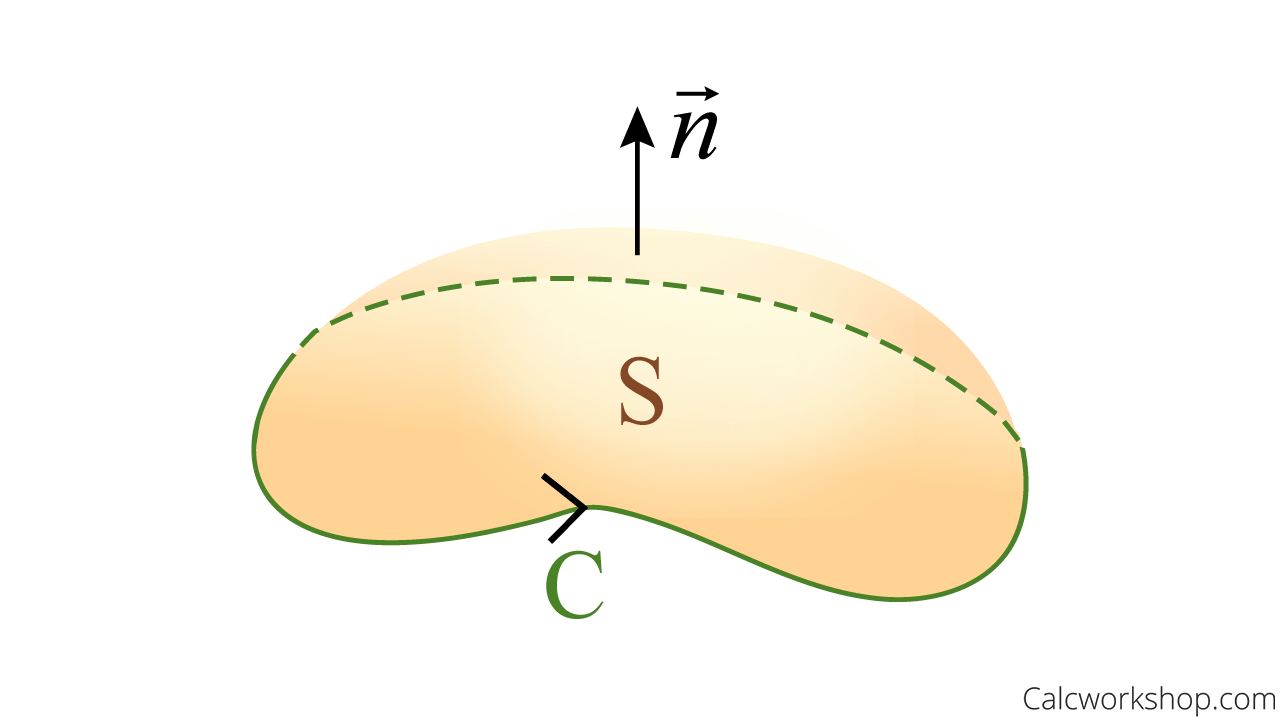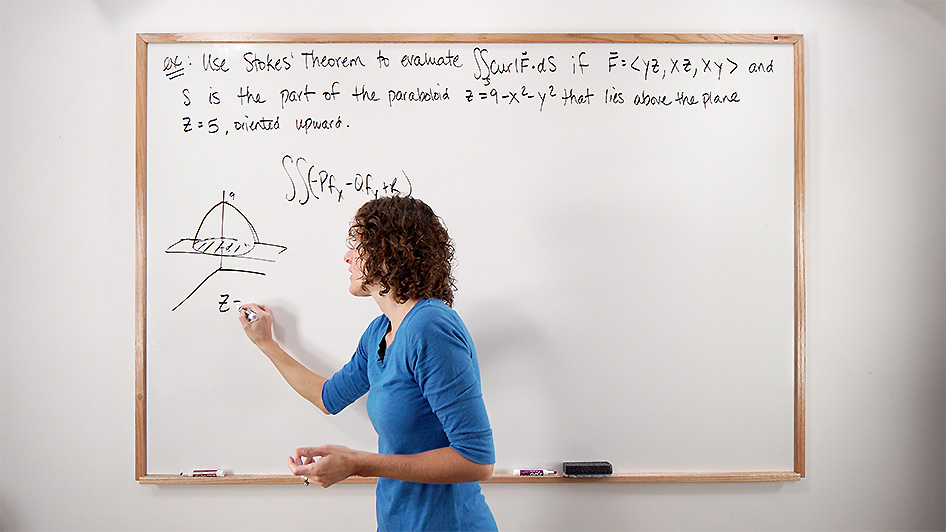Were you ever relegated to the kid’s table at family functions?

Jenn, Founder Calcworkshop®, 15+ Years Experience (Licensed & Certified Teacher)
You were in that in-between stage in your life where you were no longer a child but also not quite an adult…
…so you got stuck at the kid’s table and were left fancifully wondering about all the things you were missing out on at the far more exciting adult table.
Well, thanks to Stoke’s theorem, we are officially unstuck and free to pursue those more interesting things as the adult table… ahem…more interesting surfaces.
Say what?!
Green’s Theorem
Recall that Green’s theorem relates a double integral over a plane region
Given a line integral of a vector field

Greens Theorem Geometric Representation
So, Green’s theorem measures circulation along the boundary curve
Stoke’s Theorem
In fact, Stoke’s theorem relates a surface integral over a surface
Let

Stokes Theorem Geometric Interpretation
And this is why Stoke’s theorem is more generalized in that our surface is no longer restricted to the xy-plane and can be regarded as a higher-dimensional version of Green’s theorem with the curl.
Curl (An Aside)
As a matter of fact, Stokes’ theorem provides insight into a physical interpretation of the curl.
In a vector field, the rotation of the vector field is at a maximum when the curl of the vector field and the normal vector have the same direction.
In other words, while the tendency to rotate will vary from point to point on the surface, Stoke’s theorem says that the collective measure of this rotational tendency taken over the entire surface is equal to the tendency of a fluid to circulate around the boundary curve.
Example
Let’s put all of this new information, along with our previously learned skills, to work with an example.
Suppose
Let
Verify Stoke’s theorem by evaluating the integral of
Okay, so we are being asked to find
given the oriented surface . So, the first thing we need to do is compute
.
Next, we need to find our unit normal vector
, which we were told is our vector, . Thus…
But because
is the disk we want to utilize polar coordinates.
Therefore,
And that’s it.
Don’t worry. We’re going to spend our entire lesson making sure you understand the importance of Stoke’s theorem and learning how to evaluate this incredible double integral.
So, together we will begin by comparing Green’s theorem with Stoke’s theorem and learn how to verify that Stoke’s theorem equals a line integral. Using Stoke’s theorem, we will learn how to find the total net flow in or out of a closed surface for liquids, electric charge, or temperature.
It’s going to be great, so let’s get to it!
Video Tutorial w/ Full Lesson & Detailed Examples (Video)

Get access to all the courses and over 450 HD videos with your subscription
Monthly and Yearly Plans Available
Still wondering if CalcWorkshop is right for you?
Take a Tour and find out how a membership can take the struggle out of learning math.